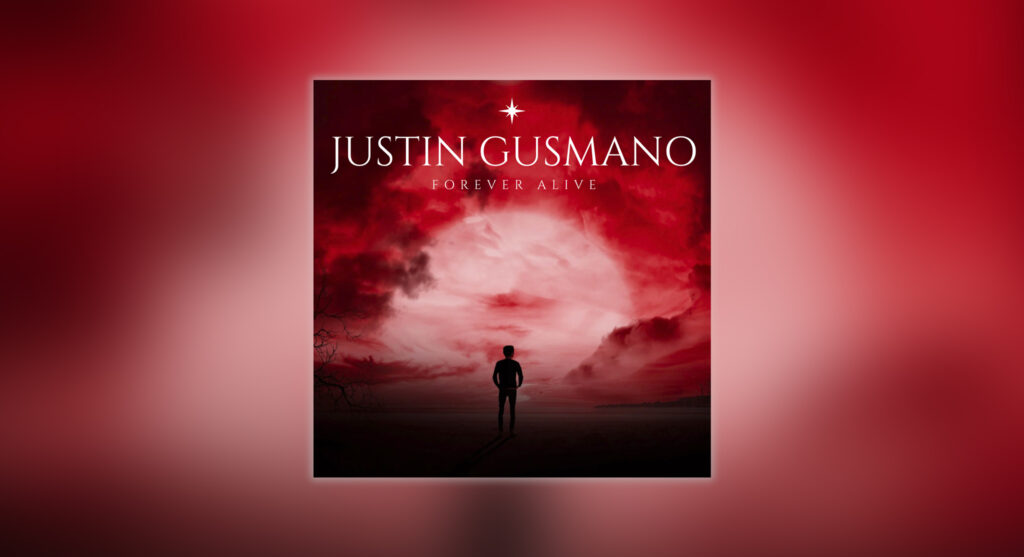In a time when genre boundaries continue to blur and artists are more empowered than ever to follow their own creative impulses, composer and multi-instrumentalist Justin Gusmano (interview here) delivers a deeply personal and musically rich debut with Forever Alive. The album is an instrumental journey that combines the soulful textures of jazz fusion, the exploratory spirit of progressive rock, and the emotional resonance of blues, all anchored by Gusmano’s virtuosity on keyboards — especially the ever-iconic Hammond B3 organ.
From the outset, Forever Alive establishes a sense of cinematic sweep. The opening track, a brief but evocative instrumental, sets the tone with atmospheric synth work that feels both modern and timeless. It’s a warm invitation, a sunrise moment before the full power of the record takes flight. That launch comes in the form of the title track, “Forever Alive,” which immediately elevates the album’s energy with dynamic interplay between Gusmano’s signature Hammond B3 and a fiery saxophone lead courtesy of Australian saxophonist Hugo Lee. The unison melodies between organ and sax create a kind of conversational energy — equal parts retro groove and forward-thinking fusion.
One of Gusmano’s greatest strengths as a composer is his innate sense of melody. While his arrangements are often complex and layered, the heart of each track remains remarkably accessible thanks to memorable, singable synth leads and carefully constructed harmonic progressions. This is especially evident on tracks like “Love Never Ends,” which begins with a delicate piano motif and gradually builds into a lush, string-infused arrangement that showcases Gusmano’s keen sense of dynamics. The song never overstates itself; instead, it blooms gently, a testament to his understanding of restraint and emotional pacing.

Then there’s “Closer Past,” a high point on the record and a thrilling showcase of musical collaboration. Guitarist Rob Balducci delivers a blistering solo that weaves in and out of Gusmano’s synth textures, while the fretless bass work of the legendary Tony Franklin adds both finesse and depth. The track walks the line between technical fireworks and pure feel, and Gusmano’s keyboard flourishes are the thread that ties it all together.
Throughout the album, there’s a clear thread of familial warmth — Gusmano’s father, guitarist Peter Gusmano, features prominently, and the chemistry between father and son is undeniable. Their shared musical language adds an emotional layer that goes beyond notes and rhythms. You can feel it in the way the guitar parts complement the keyboard work, particularly on tracks like “Starlit Horizon,” where a soaring melodic theme is passed back and forth between the two in a beautiful call-and-response fashion.
Another standout moment arrives with “Midnight Lament,” a brooding, atmospheric piece that showcases Gusmano’s skill at layering textures. The piano work is expressive and contemplative, while the use of strings adds a cinematic quality that makes the track feel like the emotional center of the album. The synth lines here shimmer with just the right amount of nostalgia, evoking a late-night drive through quiet city streets.
There’s a strong sense of cohesion to the album, due in no small part to the masterful production by James Lugo. Known for his ability to bridge the worlds of raw expression and polished production, Lugo brings out the best in each performance, ensuring that every instrument — from Scott Foster Harris’s gritty vocal contributions to Trent Williamson’s earthy harmonica — finds its space in the mix. The result is a full-bodied, organic sound that still feels precise and modern.
Technically, Gusmano pulls from an arsenal of tools and virtual instruments to shape his sound. The album features a diverse palette of keyboard tones, many of which were crafted using gear such as the Hammond SK Pro 73 and software like Keyscape, IK Multimedia’s B-3X, and Allan Lobo’s Rush Keys Deluxe — a suite that pays tribute to the Moog-era textures of the 1970s. These tools are more than just equipment to Gusmano; they’re extensions of his artistic identity, helping him tap into the tones and atmospheres that shaped his musical upbringing.
While Forever Alive stands as a polished and accomplished debut, it’s also refreshingly human. There’s an earnestness in every note — a deep love not just for the craft, but for the act of musical storytelling itself. The album’s spirit is one of gratitude, collaboration, and reflection. Gusmano doesn’t just want to entertain; he wants to share a part of himself.
There’s also a philanthropic dimension to the album’s release. With every CD sold through his official website, 20% of proceeds are donated to the Tunnels to Towers Foundation, a nonprofit that supports veterans and 9/11 survivors. It’s a gesture that underscores Gusmano’s character — humble, grounded, and committed to making a difference through his art.
In the end, Forever Alive is not just a debut; it’s a declaration. It introduces Justin Gusmano as a musician with not only technical prowess and compositional chops, but also a heart for community and a vision for expansive, genre-defying music. Rich in tone, varied in emotion, and full of inspired performances, Forever Alive is a vivid first chapter in what promises to be a compelling and meaningful artistic journey.
Stay in touch with Justin Gusmano via his YouTube and Instagram.
While Forever Alive stands as a polished and accomplished debut, it’s also refreshingly human. There’s an earnestness in every note — a deep love not just for the craft, but for the act of musical storytelling itself.

